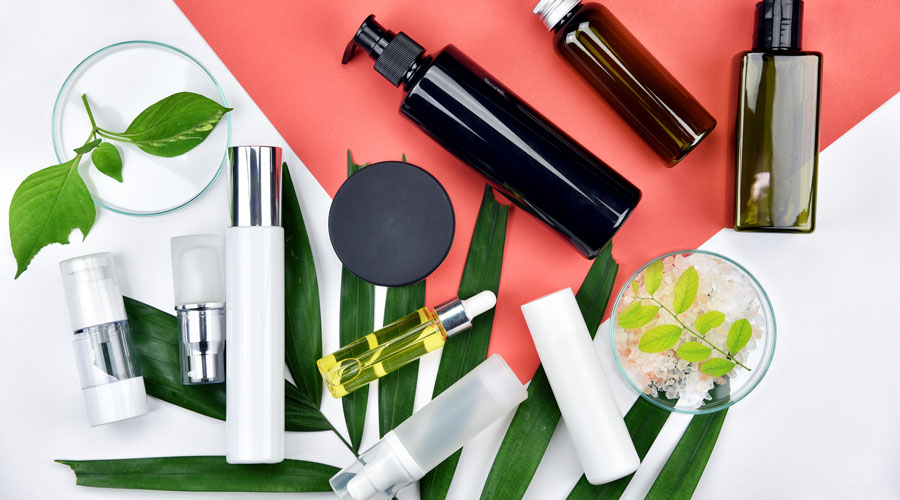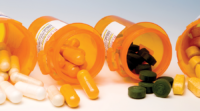Inside: Independent pharmacies can no longer assume customers aren’t looking for natural products in their stores. Get the complete guide to natural and organic products for the independent pharmacy front end.
Now’s the perfect time for independent community pharmacies to go natural. (When it comes to front-end products.)
Why? Natural is the new normal. What once was merely a niche is going mainstream. The natural and organic product industry as a whole more than doubled from 2006 to 2015, reaching $180 billion and spanning nearly every category of retail product.
In particular, natural supplements grew to $39 billion. Natural beauty and personal care reached $18 billion and is predicted to grow to $25 billion by 2025. Significantly, the majority of shoppers look for these products at pharmacies and big box retailers first.
A growing market
Besides the sheer number of dollars available, the natural products industry presents independent pharmacies with several benefits to help them grow in an increasingly difficult landscape.
“In light of the challenges in the back end and on the prescription side with reimbursements and preferred networks, independent pharmacies are looking for areas where they can have higher-margin products,” said Tom Boyer, Director of National Accounts and a member of the owners group at Hamacher Resource Group (HRG), a firm that improves results across the retail supply chain by addressing dynamic needs such as assortment planning and placement, retail execution strategy, fixture coordination, item database management, brand marketing, and analytics.
“Front-end products, and natural products, in particular, tend to be very high-margin products to bring on board.”
Adding natural products to your front end can transform your pharmacy into the natural healthcare destination for your community, especially if your main competition is a national chain. “It’s a huge opportunity,” Boyer said.
“It’s not going to happen overnight. But if independent pharmacies play their cards right, if they commit to it, they can build a nice niche.”
Offering natural products in the front end can also bring in patients. “One big goal from a business standpoint is to increase traffic,” Boyer said. “Offering natural product lines and making patients aware that you are a natural product provider is key.”
The rise of natural shoppers
For a long time, the natural shopper demographic consisted of a small subset of people. These shoppers bought natural and organic products almost exclusively. The rest of consumers didn’t think twice about the ingredients in their products. The divide between the two kinds of shoppers was clear and wide.
But the distinction between conventional and natural shoppers has blurred. Today, more people dwell somewhere in the middle of the natural and conventional divide. Pharmacies should no longer assume that most of their patients aren’t interested in natural products.
“In the past, people thought natural and conventional shoppers were two separate groups,” said Jen Johnston, CHHC, Senior Marketing Services Account Manager at HRG. “But there’s so much of a blending now. Pharmacies might be surprised if they start asking their customers what their preferences are. They may have more naturally-inclined shoppers than they ever imagined.”
What people look for
In general, more people pay attention to what’s in products today. American consumers don’t trust many mainstream products and their industrial processes. Especially in the pharmacy product categories. Nearly half of all consumers worry about chemicals in personal care products, according to research from the National Marketing Institute.
Two in five U.S. consumers used a natural or organic version of a personal care product in the past six months. And in one national survey, nearly two-thirds said they buy and use natural over-the-counter (OTC) products more now than they did five years ago.
And this trend isn’t confined to certain age groups. For example, 40 percent of women ages 35 to 49 indicated interest in organic or natural beauty and personal care products. Followed by 37 percent at ages 50 to 64 and 32 percent at ages 65 and older. “What that’s telling us is that it’s not just a phenomenon of the younger population,” Johnston said. “This interest in cleaner and more natural products spans generations.”
The blurring of the line separating conventional and natural shoppers means your pharmacy has an opportunity to make a profit on natural products today unlike ever before.
Defining natural and organic
Organic is easier to define than natural. The United States Department of Agriculture (USDA) regulates what can be labeled organic and provides seals for approved products. A “USDA organic” or a “100 percent organic” seal means the contents are at least 95 percent organic.
In general, USDA organic products must have been produced using natural processes and materials and using practices that “promote ecological balance and promote biological diversity.” Products that say “made with organic ingredients” can have up to 30 percent of non-organic ingredients.
Natural is less clear. Unlike organic, the term “natural” isn’t regulated, so it doesn’t come with an official definition. What’s considered natural often depends on the positioning of the product and the perception of the shopper, Johnston said. If a product aligns with a person’s alternative diet or lifestyle, for example, they might consider it natural.
For most shoppers, it comes down to the ingredient list. “To the shopper, natural products are more often than not determined by what they’re free from. So, what they don’t contain versus what they do,” Johnston said. “A natural product is more likely to be free from things like preservatives, artificial colors, and fragrance. They’re often free from one or more of the top eight allergens.”

Where to source products
Where do you source natural and organic products to add to your front end?
Many traditional drug distributors carry natural products. They may have a limited selection compared to wholesalers that specialize in natural and organic products, like KeHe Distributors, LLC and United Natural Foods, Inc. When deciding where to source your products, approach it like you would any other product.
“It’s the same type of business practices when a pharmacy is buying conventional products from their wholesaler,” Boyer said. “Everything from the customer support, delivery times, payment terms, and more. All the traditional things that a pharmacy typically has to navigate.”
Make sure to consider educational support, Johnston said. Pharmacists she’s talked to stressed the importance of understanding the science behind natural and organic products. “First of all, so they can believe in it,” she said. “And, so they can explain to their staff and customers how the product works and why.”
To capitalize on your independent advantage, source locally. “It could be in your own city, town, state, or region where there are many natural or organic manufacturers that are in your backyard,” Boyer said. “Source and promote those community-based local manufacturers in your store because typically chains aren’t going to do that.”
It’s also a selling point to the growing number of shoppers trying to support independent businesses. “Independents can really capitalize on the fact that they are independent and have a nice tie in with a lot of the natural brands that are also independent,” Johnston said.
How to sell natural products
Once you’re fully stocked and ready to go, you need to make the investment pay off.
Johnston and Boyer outlined a few strategies every pharmacy should practice. The first step is training your staff. They’re your front line in the front end. They need to know how to talk to patients about the products, how to answer questions, and how to direct them to the right place.
“Customers will probably have a tendency to ask more questions about natural products compared to conventional products,” Boyer said. “In addition to the pharmacist, staff is in the best position to share with customers what’s happening in your store.”
Another strategy is to hire a wellness professional to give a seminar. A seminar will raise awareness about your natural products and might also draw in new patients to your pharmacy. Johnston suggested health coaches, naturopathic doctors, dietitians, doctors trained in functional medicine, and chiropractors as possible options.
Ways to promote natural products include:
- Provide product demonstrations
- Hang signage
- Give away samples and coupons to patients picking up prescriptions
“You have a captive audience; you already have a customer that’s purchased something, you’re giving them a free gift and you’re promoting naturals,” Boyer said. “People love to get free things especially if it’s something that is good for their health.”
For more information on adding natural products to your front end, check out Hamacher Resource Group’s blog series, “Step into Natural.”
Top 3 Natural Product Categories
Keep these best-selling categories in your pharmacy’s front-end lineup.
1. Dietary supplements
2. Beauty care (hair products, body products, deodorants, lip balms)
3. Oral care (toothpaste, mouthwash)
Natural Product No No’s
Natural personal care products are more often defined by what they don’t contain. Here are some ingredients that natural shoppers want to avoid.
- Artificial fragrance
- Fragrance
- Parabens
- PEG
- Phthalates
- Sulfates
Want more pharmacy business tips and advice? Sign up for our e-newsletter.












